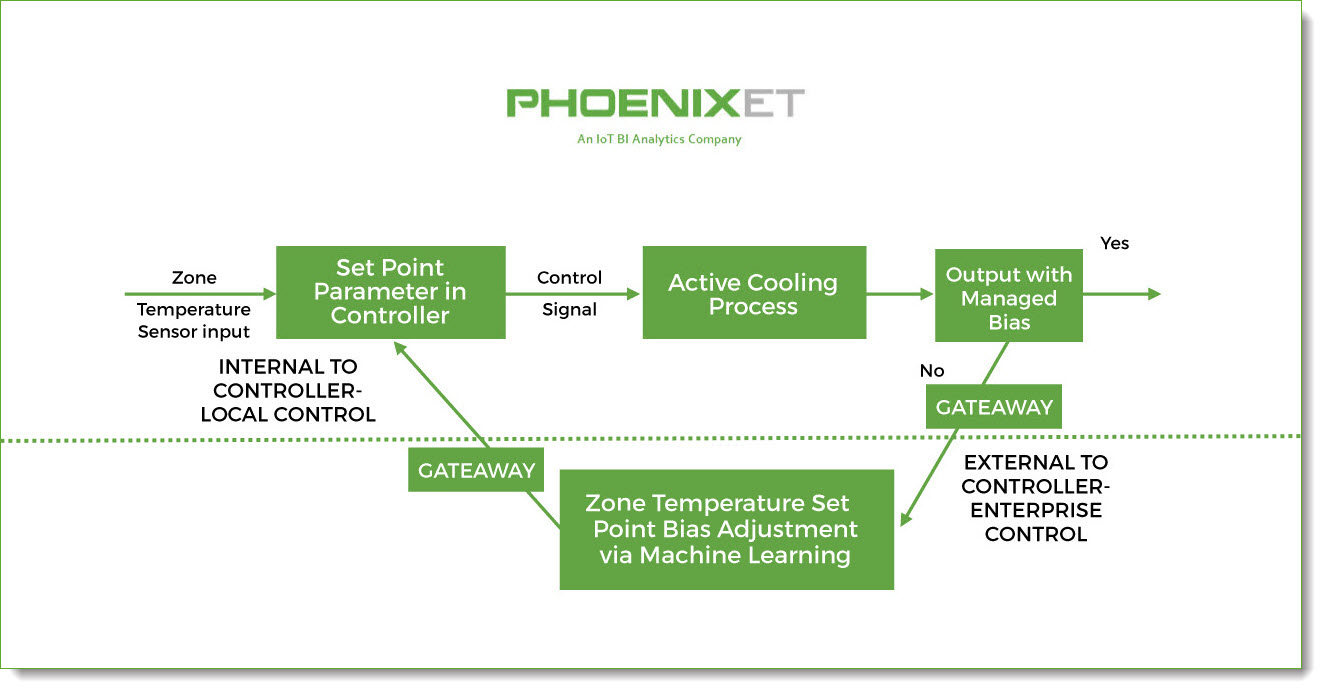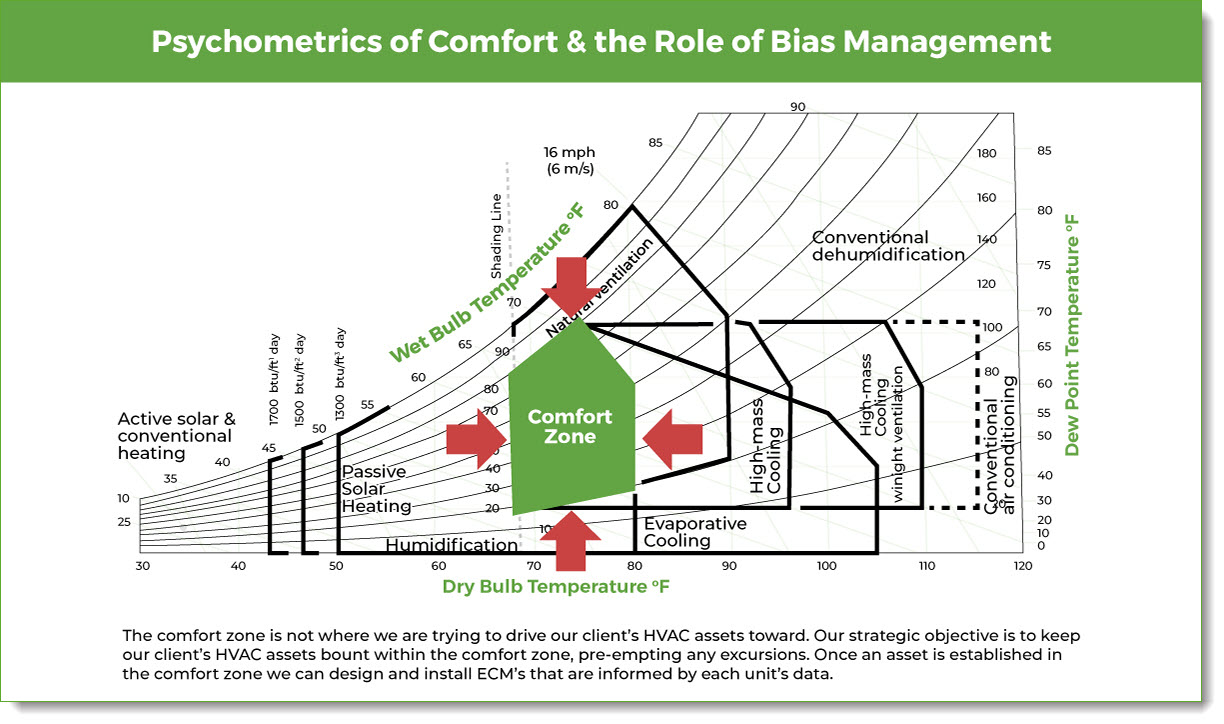Share this
Building Management: Understanding Closed Loop Control
by Phoenix Energy Technologies on Aug 19, 2019
 Building management continues to become more sophisticated over time. Gone are the days where a building manager could be found, clad in coveralls, banging away in a basement boiler room trying to keep tenants from freezing in the middle of winter.
Building management continues to become more sophisticated over time. Gone are the days where a building manager could be found, clad in coveralls, banging away in a basement boiler room trying to keep tenants from freezing in the middle of winter.
Facilities management has flourished into a multi-billion dollar industry that takes advantage of leading technological innovations, such as artificial intelligence, for optimal performance. Managers in the modern industry often control multiple smart buildings using a single system from a remotely located, web-based interface.
While building systems have evolved through technology making operating multiple buildings far more efficient, it doesn't always mean that the buildings themselves are operated in the most efficient way. The ability to access and control the environmental comfort systems of multiple buildings from a remote location is great, but if the management philosophy is still rooted in methods developed decades ago, you won't reap all of the benefits that modern technology offers.
Facilities managers face conflicting demands from customer comfort and economic and environmental concerns. In order to meet all of those demands, managers must do more than simply maintain building setpoints. Keeping customers comfortable and the finance people comfortable with the bottom line takes an understanding of control theory, artificial intelligence, and of psychrometric curves.
Guide to Building Management Technologies
What is Closed Loop Control?
The use of control theory in HVAC has caused some confusion throughout the industry and it is important that we understand how to properly apply it.
To start, we need to understand the inputs and outputs as too often they get confused. The target zone temperature - that is the temperature of the space under control - is the intended input of the HVAC control system. The output of the control system is called the bias, which is either in tolerance or out of tolerance. The control systems adjusts based on the tolerance of the bias signal.
Consider a typical control loop used in HVAC control by referencing the block diagram shown below. The components shown above the dashed line are local, such as a thermometer, and those below are remote, such as the computer network of a building management company.
Starting at the left, the system receives input from a temperature sensor that is then compared to the setpoint programmed into the controller. The setpoint may be set digitally or, most basically, through the use of a thermostat slider. 
The comparison of the two signals creates the actual control signal that in turn activates or deactivates the heating or cooling process.
Many modern systems, such as those used by the building management industry, have added another layer to the control loop that includes the use of artificial intelligence (AI). The role of AI is essentially to refine the control such that the loop no longer mindlessly drives to the setpoint alone.
Through the use of machine learning algorithms, the setpoint now becomes a lever that tunes the tolerance of the control system output bias. The addition of the machine learning algorithm effectively creates finer and more precise loop control, adding an enormous amount of value for a building manager who is trying to balance the demands of tenant and landlord alike.
What is a Precision Building System?
Precise Control and ECMs Create Precise Building Management
Systems that operate with precision controls can take full advantage of Energy Conservation Measure, or ECMs. Consider the psychrometric chart shown below with the comfort zone highlighted in green. Using a properly designed closed-loop controlled HVAC system, ECMs can be used to maintain building environments within the comfort zone. Keeping spaces in the comfort zone, and minimizing or even eliminating deviations out of it helps save money in the long term through reduced utility and maintenance expenditures.

Precise facilities and energy management allows managers to meet the demands of customers, the environment and economics. With the right design and controls, your customers will be more comfortable and you will save them money in the long run.
If you are interested in learning more information about how different building management technologies can meet your needs, please download our Guide to Building Management Technologies below.
Share this
- Facilities Management (91)
- Energy Management (69)
- Company News (49)
- Smart Buildings (37)
- Retail (36)
- Building Management (24)
- Building Automation Systems (21)
- Sustainability (20)
- Energy Demand Management (19)
- EEI (15)
- Adaptive Energy Management (14)
- Grocery (14)
- demand response (14)
- Artificial Intelligence (12)
- Data Integration and Visibility (10)
- HVAC IQ (9)
- COVID-19 (8)
- Customer Spotlight (8)
- Carbon Management (7)
- Setpoints and Temperatures (7)
- Equipment Maintenance (6)
- Operational Efficiency (6)
- Refrigeration Optimization (6)
- Ask Ron (5)
- Asset Manager (5)
- Finance and Procurement (5)
- IoT and Digital Transformation (5)
- Awards (4)
- Comfort (4)
- Energy & Store Development (4)
- Safety and Compliance (4)
- Demand Charge Management (3)
- Energy Management System (3)
- Lifecycle Asset Management (3)
- Premium Services (3)
- Refrigeration IQ (3)
- Automated Demand Response (2)
- ConnexFM (2)
- Customer Service (2)
- HVAC Vendor Management (2)
- Load Shedding (2)
- Technician View (2)
- AIM Act (1)
- ALD (1)
- Analytics (1)
- Data (1)
- Data Integration and Visualization (1)
- EMS (1)
- Knowledge Center (1)
- OSHA (1)
- asset management (1)
- December 2025 (1)
- November 2025 (1)
- October 2025 (2)
- September 2025 (1)
- August 2025 (3)
- July 2025 (1)
- June 2025 (1)
- May 2025 (2)
- March 2025 (2)
- February 2025 (1)
- January 2025 (2)
- December 2024 (2)
- October 2024 (1)
- September 2024 (1)
- August 2024 (2)
- June 2024 (2)
- April 2024 (2)
- March 2024 (2)
- January 2024 (1)
- December 2023 (1)
- October 2023 (2)
- September 2023 (2)
- August 2023 (2)
- July 2023 (1)
- May 2023 (2)
- April 2023 (2)
- March 2023 (3)
- February 2023 (1)
- January 2023 (1)
- December 2022 (1)
- November 2022 (2)
- October 2022 (2)
- September 2022 (1)
- May 2022 (2)
- April 2022 (1)
- March 2022 (3)
- February 2022 (2)
- January 2022 (4)
- December 2021 (2)
- November 2021 (3)
- October 2021 (1)
- September 2021 (3)
- August 2021 (4)
- July 2021 (1)
- June 2021 (2)
- May 2021 (1)
- January 2021 (2)
- December 2020 (2)
- November 2020 (2)
- October 2020 (3)
- September 2020 (4)
- August 2020 (3)
- July 2020 (2)
- June 2020 (3)
- May 2020 (3)
- April 2020 (5)
- March 2020 (5)
- February 2020 (4)
- January 2020 (4)
- December 2019 (4)
- November 2019 (3)
- October 2019 (4)
- September 2019 (5)
- August 2019 (4)
- July 2019 (4)
- May 2019 (2)
- April 2019 (3)
- February 2019 (1)
- December 2018 (1)
- November 2018 (1)
- October 2018 (3)
- September 2018 (3)
- August 2018 (3)
- July 2018 (3)
- June 2018 (3)
- May 2018 (1)
- June 2015 (1)
- March 2013 (1)
- January 2013 (1)
- December 2011 (1)
- October 2011 (1)
- September 2011 (1)


